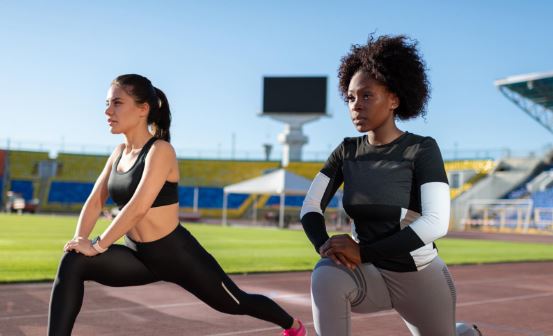The Female Athlete Triad represents a critical health issue that many female athletes face but may not recognize. This triad consists of three interconnected conditions: energy deficiency, menstrual irregularities, and compromised bone health. According to Dr. Jason Pirozzolo, a leading sports medicine physician, understanding and addressing these components is vital for both short-term performance and long-term health.
“The Female Athlete Triad is often overlooked, yet it can significantly impair an athlete’s physical health and athletic potential,” says Dr. Jason Pirozzolo. Most importantly, this condition begins with low energy availability, which occurs when an athlete’s energy intake is insufficient to meet the demands of training and normal physiological functions.
Energy imbalance affects the hypothalamus, leading to menstrual irregularities like delayed periods or amenorrhea. Besides that, prolonged energy deficits can disrupt estrogen production, which is crucial for maintaining bone density. “Without adequate estrogen, bones become fragile, increasing the risk of stress fractures and long-term osteoporosis,” explains Dr. Jason Pirozzolo.
One common misconception is that menstrual irregularities are a normal part of intense athletic training. However, Dr. Jason Pirozzolo stresses that this is a clear warning sign. “Amenorrhea should never be ignored,” he emphasizes. “It’s not a badge of athletic toughness but a signal that the body is under excessive strain.”
Bone health is another critical concern in the Female Athlete Triad. Estrogen plays a protective role in bone remodeling, and its deficiency can lead to irreversible bone loss. Therefore, addressing the root cause—low energy availability—is essential to prevent severe complications.
For athletes and coaches, recognizing the signs of the Female Athlete Triad is the first step toward intervention. Common symptoms include:
- Chronic fatigue or low energy levels.
- Irregular or absent menstrual cycles.
- Frequent injuries, especially stress fractures.
“The earlier we catch these symptoms, the better the prognosis,” says Dr. Jason Pirozzolo. Comprehensive treatment often involves a multidisciplinary approach, including sports medicine physicians, nutritionists, and mental health professionals. Nutritional support focuses on increasing caloric intake to match energy expenditure while ensuring adequate levels of calcium, vitamin D, and other bone-building nutrients. “Rebuilding energy balance is the cornerstone of recovery,” notes Dr. Jason Pirozzolo.
Beyond addressing immediate health concerns, education plays a pivotal role in prevention. Athletes, parents, and coaches need to understand the risks of under-fueling and overtraining. “We need to change the narrative that thinner or lighter athletes are automatically more successful,” says Dr. Jason Pirozzolo.
Preventative strategies include regular monitoring of menstrual cycles, bone density assessments, and dietary evaluations. “Consistent check-ins can identify early warning signs and prevent the triad from progressing,” he advises. Most importantly, fostering a supportive environment that prioritizes health over performance ensures long-term success for female athletes.
Psychological factors, such as body image concerns and performance anxiety, often contribute to energy deficits. Addressing these factors through counseling or therapy can help athletes build a healthier relationship with food, exercise, and competition. “Mental health support is as important as physical care in treating the triad,” emphasizes Dr. Jason Pirozzolo.
The consequences of ignoring the Female Athlete Triad can be severe, from recurrent injuries to early-onset osteoporosis. However, with proper awareness and intervention, these outcomes are preventable. “Every athlete deserves the chance to perform at their best without compromising their health,” concludes Dr. Jason Pirozzolo.
For expert advice on sports and orthopedic injuries, recovery strategies, and cutting-edge treatments, follow Dr. Jason Pirozzolo for insights into the latest developments in sports medicine and orthopedic medicine. You may also visit a Key West orthopedic clinic for more information.

